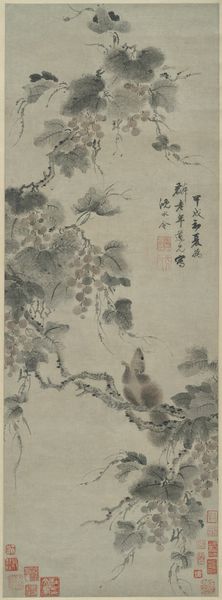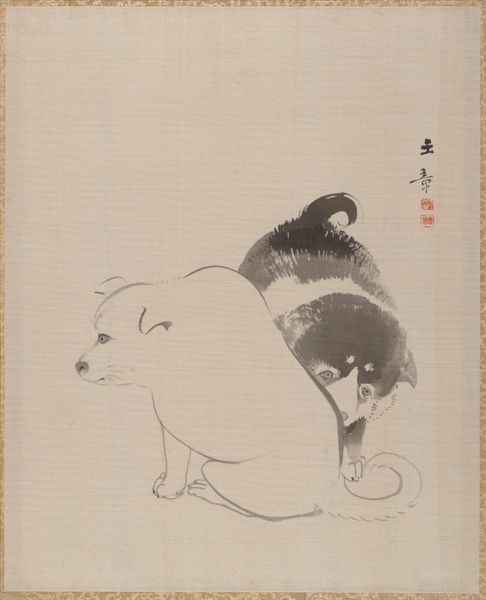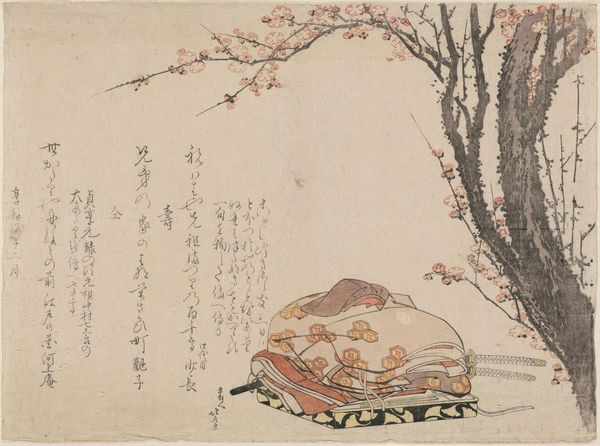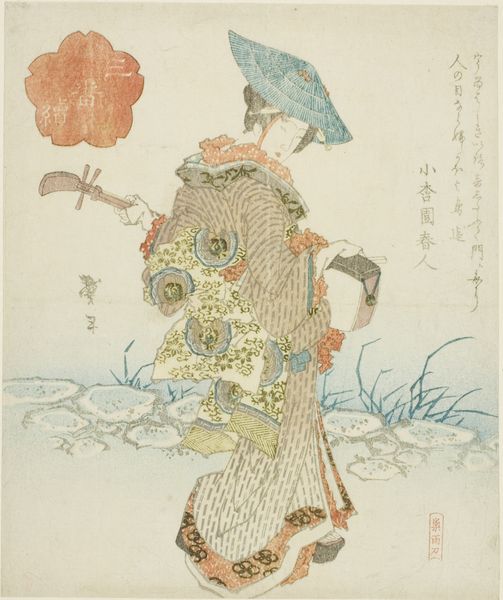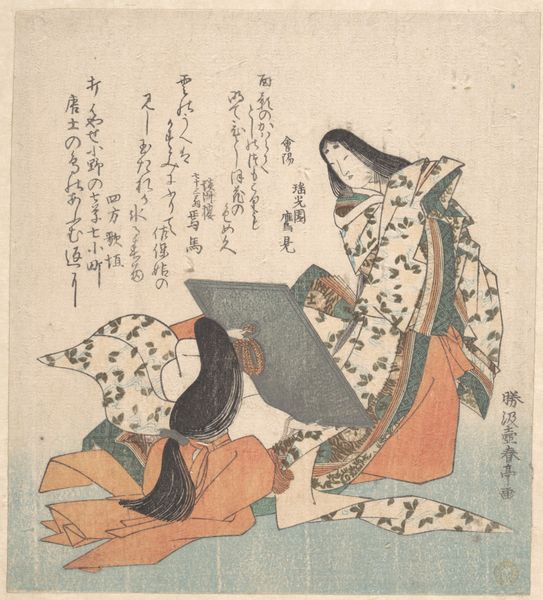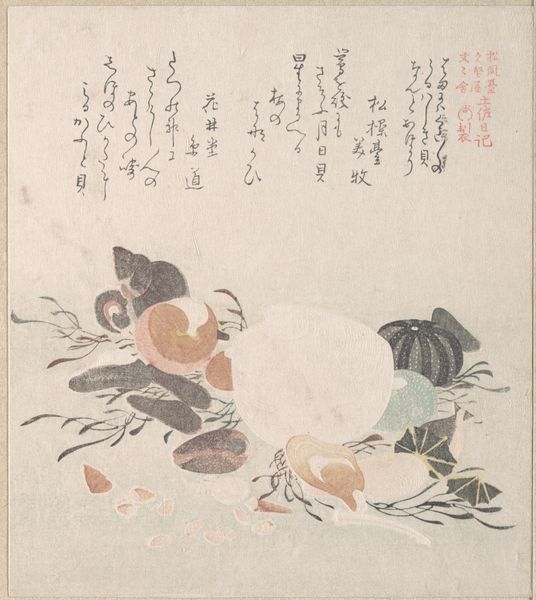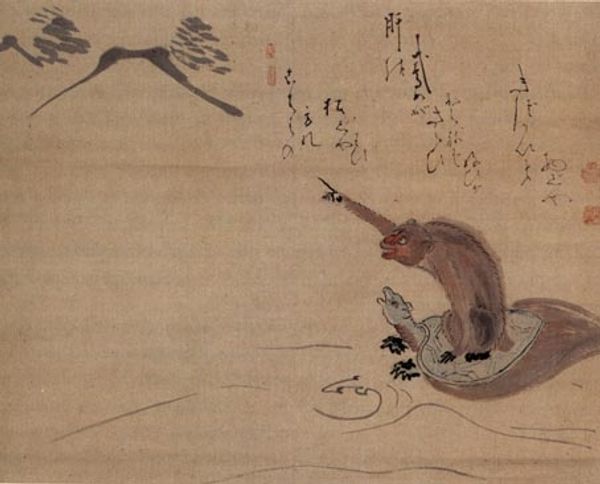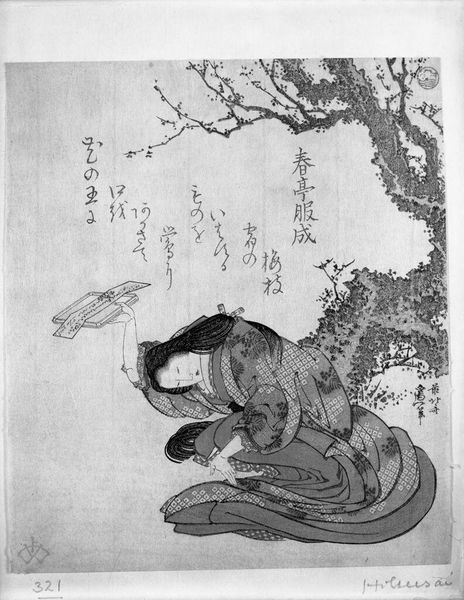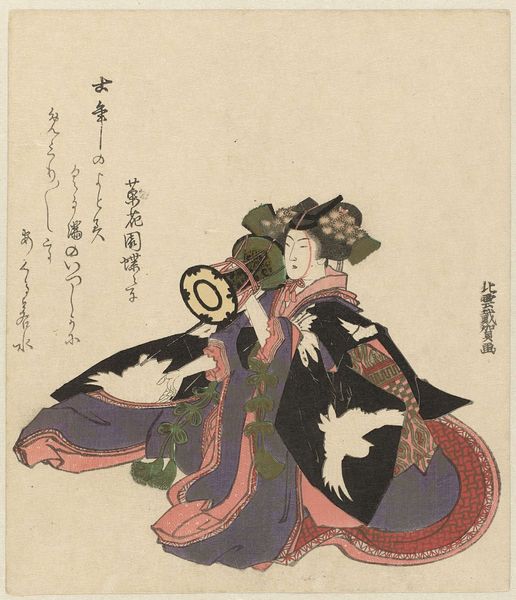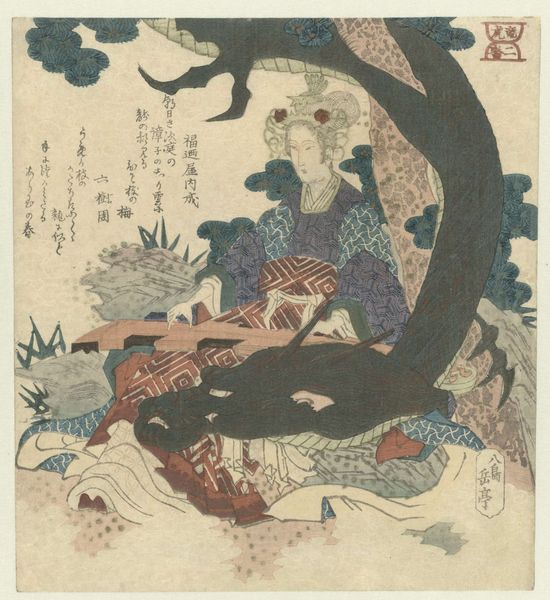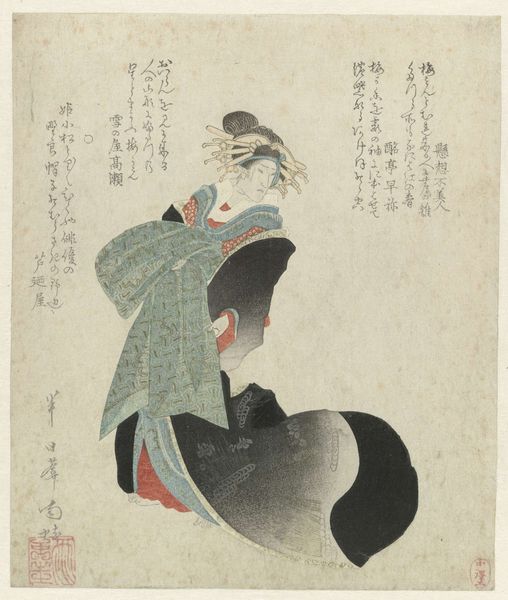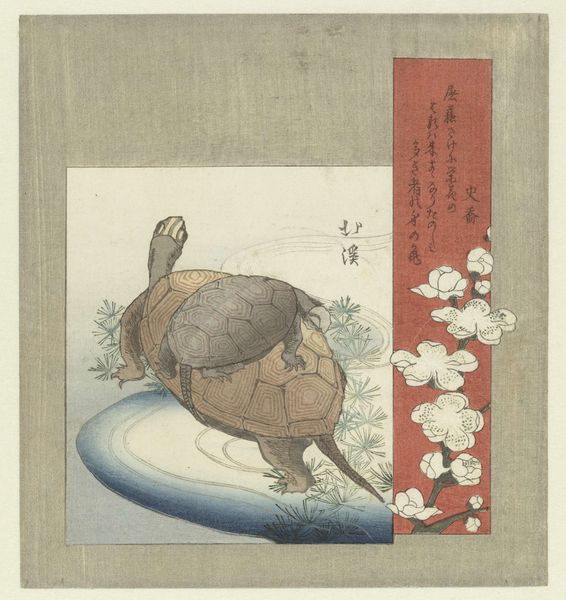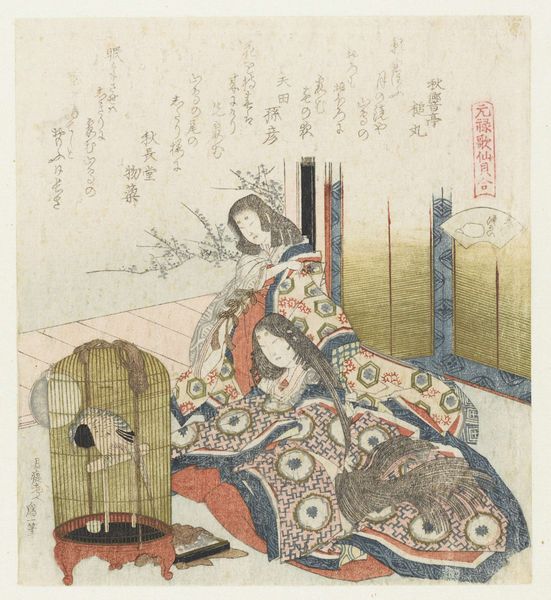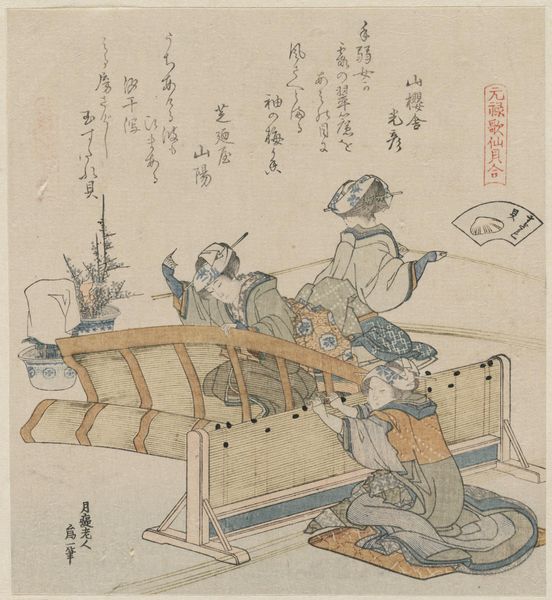
Dimensions: height 212 mm, width 184 mm
Copyright: Rijks Museum: Open Domain
Editor: Here we have "A Woman Offering Poems on a Tray," a Japanese woodblock print made around 1890-1900. It depicts a kneeling woman holding up what looks like poems, but it's her posture that grabs me, this sense of reverence. What symbolic gestures are present here? Curator: A remarkable observation! Posture indeed speaks volumes. The kneeling, the lowered head, and the offering – these are not just physical positions but powerful symbols of humility, respect, and submission. It reflects Confucian ideals ingrained in the social fabric of the time, revealing emotional, cultural, and psychological depths of respect. What do you notice about the setting itself? Editor: The tree, with its delicate blossoms, adds a gentle, almost melancholic touch. Are we to associate this blooming, frail imagery with the offering or the woman? Curator: Precisely! Consider the tree a symbol of both transience and beauty, mirroring the ephemeral nature of life and art. In Ukiyo-e tradition, cherry blossoms are emblematic of spring, but also of the fleeting moment. Do you think this impacts our understanding of the poems she's presenting? Editor: Definitely, knowing the context provides new understanding of temporality – I'm rethinking it. It’s as though she's offering these poems not just to someone but to time itself, accepting its passage. Curator: Wonderful. It's like a gesture connecting personal experience and universal principles. Looking through time allows symbols and forms to hold greater context, revealing their ongoing relevance in interpreting art and cultural memory. Editor: I see how the imagery of a seemingly simple gesture becomes intricately layered with historical and cultural context! Thank you for helping make that apparent. Curator: It was a pleasure! Seeing through the lens of symbolic gestures enables a broader appreciation of the piece’s emotional, psychological and cultural values that exist across history.
Comments
No comments
Be the first to comment and join the conversation on the ultimate creative platform.
